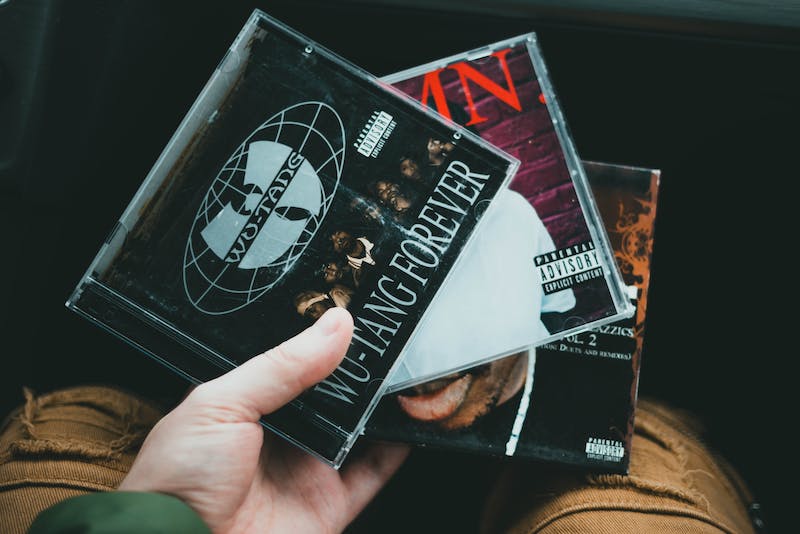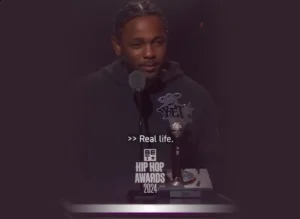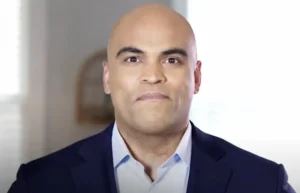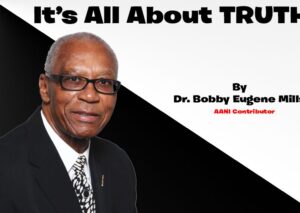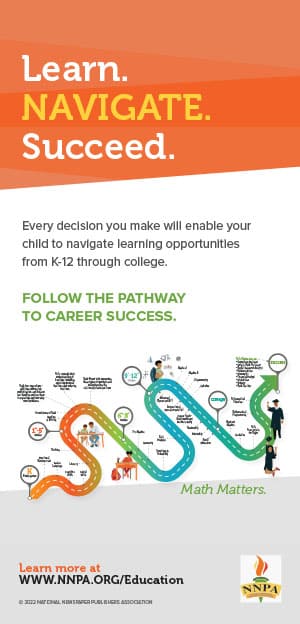By Jacob R. Miles III, CEO & founder,
MAP Esports Network, Inc., Cultural Toys and author of My American Toy Story
Overview
Hip-hop has been a cultural phenomenon since its inception in the late 1970s. It has influenced many aspects of popular culture, including toys, animation, video games and now AI and the Metaverse.The history of hip-hop music is rooted in the African American and Latino communities of New York City. The pioneers of hip-hop were well-versed with street culture and realized that they could create something positive out of it. The music traveled and struck the masses and began to be featured in Hollywood, discos, cinemas and other entertainment fields.
Hip-hop’s influence on the video game industry can be traced back to the early 1990s. The first video game based on hip-hop was “Rap Jam: Volume One,” which was launched in 1995 for the Super Nintendo platform. The game combined NBA basketball with rap and hip-hop. Another notable game was “PaRappa the Rapper,” which was launched in 1996 for Sony’s PlayStation. It used cartoon designs to introduce hip-hop to children, and was like an early version of Guitar Hero that involved freestyling. Hip-hop has also influenced the toy industry. Toys like Hollywood Hounds™, Hip-hop Bobbleheads™ and rap-based toys like Madvillain figures by Kidrobot and Travis Scott ‘Rodeo’ action figures are sought after.
Hip-hop has also wielded a significant impact on animation. In the 1980s, hip-hop music videos began to feature animation. The music video for “The Adventures of Grandmaster Flash on the Wheels of Steel” was one of the first to use animation. Hip-hop has also influenced anime. Rappers like Wu-Tang Clan and MF DOOM have referenced anime in their music, and anime has been used in hip-hop music videos.
In summary, hip-hop has had a significant impact on popular culture, including toys, animation, video games and beyond. Its influence can be seen in the development of new art forms that impact the lives of new and older generations. Clearly a global phenomenon, it continues to appeal, to adapt and to grow.
Note: This report is taken from author, Jacob R. Miles III’s upcoming book Hip-hop in Pop Culture, Toys, Games and Technology™, which takes a deeper dive into Hip-hop’s impact on non-musical segments of play and pop culture.
About the Author
– Founder and CEO of MAP Esports Network, Inc. Power Players League®, Global Digital Divide Initiative d.b.a. as MAP Digital Network
– Managing Partner, Miles Analysts Partners, an investment, business, media and toy industry consultancy
– Founder of Cultural Toys™ – Creator of Hollywood Hounds, Cultural Toys® Preschool and Dinkytown Kids™, Hip-hop’s C’Bear and Jamal Toys featuring Tone Loc
– Speaker and panelist on revitalizing marginalized communities, leadership, toys and gaming; speaker at Morgan Stanley’s Global Sports and Entertainment Group/Esports Trade Assoc. business symposium on Diversity in Esports & the Metaverse, at CQ Infinity’s AI Creative in Toys, Games and Business, Multicultural Marketing at the Los Angeles Media &Entertainment Expo
– Former CEO & chair, Urban Television Network Corp.
– Founder, GrapevineStar™, creator of the original Hip-hop Bobbleheads™, Hip-hop Hounds™ and London Manga’s MC Harlem™
– Past Toy industry, Vice President, HASBRO, TONKA, SEGA and General Mills/Kenner
Raised in the Millvale housing projects in Cincinnati, Ohio, Jacob R. Miles III entered a government-sponsored engineering apprentice program for at-risk youth, leading him to the University of Cincinnati from where he first went to work at General Electric designing jet engines. The experience of working with engineers, detailed drawings, animation, exotic materials, fabrication procedures, intricate production cycles and journeymen tool & die makers proved to be an invaluable training ground for his career in management, product development, engineering, planning and operations.
Miles is the first African American to go straight from the streets to working with over nearly 20 Toy industry Hall of Fame inductees throughout his expansive toy industry career. Becoming a Fortune 100 senior executive managing elaborate global entertainment projects, leading content, development, marketing, toy, film and television focused teams.
Over the past 40 years, Miles has spearheaded many TV/film content, and product development, manufacturing, promotions, licensing and distribution campaigns, from Asia, to Hollywood, to New York and virtually everywhere in-between. Besides being a critical part of the first major toy industry TV and film production, licensing and merchandise program to come out of Hollywood, Star Wars, he has gone on to work for Kenner Toys, General Mills Entertainment Group, Tonka, SEGA and Hasbro, developing programming and manufacturing for such notable programs and products as the Care Bears, Batman, Superman, The Ghostbusters, GoBots, Pound Puppies and SEGA video games, among many others.
He has further worked side by side developing television and film properties with Lucasfilm, Jim Henson Cos., DIC, The Walt Disney Company, Warner Bros., Film Roman, NBA, MLB, NFL and Hallmark Entertainment and more. Capitalizing on his business experience and relationships, Miles founded Cultural Exchange Entertainment Corp. (CEE), and Cultural Toys™, an award-winning company that focused on edutainment, multicultural properties and designed, developed and licensed a number of toys and entertainment properties for TV, including Hollywood Hounds, Hip-hop’s C-Bear & Jamal and Dinkytown Kids™ toys, plus others featured on the ABC, FOX and HBO networks. Here, he teamed up with businessman Clarence Avant, who served on CEE’s Board of Directors, and as an inspiring mentor.
After selling CEE/Cultural Toys™, Miles began consulting with internet-focused entertainment and media companies leading to the founding of the Urban Cool Network Inc. relocating from Minneapolis to Dallas, Texas. From this new home base, he partnered with Silicon Valley technology companies and the U.S. government working to bring broadband access to minority communities nationwide. Miles was instrumental in former Vice President Al Gore’s Digital Divide Initiative and programs, and toured the country with he and industry leaders addressing and promoting this critical issue.
Several years later, Miles set up operations in Grapevine, Texas for the Grapevine Star Entertainment Company, which provided TV/film, event, product, niche property and online communities content and development, as well as promotions and licensing to the media and entertainment industry. Grapevine emerged as a national leader in the development, management, licensing and distribution of multicultural entertainment properties’ content, merchandise and merchandise integration solutions.
Select property brands included the Kenya Doll, Hip-hop Hounds™, Beautiful Africa, Little Puffy the Steam Engine™, “The Tex Dunright™ Show,” “Main Street Stories™,” “The Adventures of Mr. Bandman™,” “MeMe and My World™,” The Emotionals™, Chubby Cubbies™, Hip-Hop Bobbleheads™, London Manga™’s MC Harlem, a hip-hop emcee and martial arts champion and “Grapevine JAM (with the Smithsonian and producer Quincy Jones),” among others.
Bearing a strong sense of civic pride and responsibility, Miles is the proud past president of the Dallas-Fort Worth chapter of the National Association of Minorities in Communications (NAMIC). In 2003, the Urban Television Network Corporation appointed him to its board of directors and named him as a consultant. By March of 2006, he was appointed CEO and chairman of the network to lead a strategic makeover and oversee the sale of the company.
He is a past city of Grapevine, Texas mayor and city council appointee, serving on the board of directors of the Grapevine Heritage Foundation (GHF) for over a decade. Miles further is a past member of the University of North Texas-Denton’s Marketing School Advisory Council. A national speaker focused on career advancement, digital literacy, diversity, entrepreneurship and the importance of mentoring and role models in media and entertainment grounded in disadvantaged communities, Miles at the same time has presented companies’ business models and plans to Goldman Sachs, Merrill Lynch, Piper Jaffrey, among many others with successful outcomes.
He has been featured guest on MTV, CNN, PBS, NPR, BET, NBC, CBS, and in national publications including The Wall Street Journal, USA TODAY, BusinessWeek, Entrepreneur, EBONY, Black Enterprise and Institutional Investor plus numerous local television programs, magazines and newspapers. He has been honored by New York’s Strong National Museum of Play for his award-winning, contributions to the toy and entertainment industry.
More recently, Miles was featured in the A&E Network/History Channel’s program, “The Toys That Built America,” season 3, and his work has been chronicled in several best-selling books, including FOREVER Barbie by MG Lord, How to Succeed in Business without being White, by Earl G. Graves, Sr., founder and publisher of Black Enterprise magazine, Wide-Angle Vision: Beat Your Competition by Focusing on Fringe Competitors, Lost Customers and Rogue Employees by Wayne C. Burkan and Engineering an Empire, the Creation of Star Wars Toys by Borbidge, George & Ward.
He is the author of the forthcoming books, My American Toy Story, The Art of Fun in Leadership and Growth: How to Win with the 3 Cs (Character, Compassion & Communication) and Hip-hop in Pop Culture, Toys, Games and Technology™.
In his own words:
“Hip-hop, like Bebop and Jazz before it, has influenced every aspect of our lives.”
—Jacob R. Miles III
Hip-hop in Toys and Games
Nothing is more common than music, toys and games at a kid’s back-to-school or birthday party. Like many styles of music, hip-hop has roots in play, and its evolution was shaped by many different kids, some of whom would grow up to become music artists. The story in the streets of New York is that the art form was born in the summer of 1973, at a birthday party in an apartment building in the Bronx. The teenager who presided over that historic event was the birthday girl’s older brother, Clive Campbell, better known to history as DJ Kool Herc, founding father of hip-hop.
Hip-hop has influenced various aspects of popular culture, including music, fashion, language, dance, toys, games and visual arts. Hip-hop gamified funk, reggae and soul music by toasting (shout-outs) which would become rapping over music that highlighted the instrumental parts one feels the most—the bass and the drumbeats—emphasizing the break and moving from one to the other. The gamification continued with the healthy competitions between breakdancers, graffiti artists, deejays and rappers.
Following the FBI and police’s oppression and suppression of Black leaders and organizations in the late 1960s, Black expressions in toys, games, music and pop culture took on a social justice tone. The ’70s represented a profound shift. Rather than taking direct political action, the new generation was expressing itself through poetry, spoken word, deejaying, emceeing, b-boying/b-girling (breakdancing), and graffiti—the pillars or “elements” of hip-hop.
Brooklyn-born artist Fab 5 Freddy, who is credited with bridging the gap between New York City’s music and visual arts worlds, argued that the looping interactivity of these elements proved hip-hop went beyond a purely musical or artistic movement—it was an entire culture. Noted author Nelson George advanced a similar claim in his book, Fresh: Hip-Hop, Don’t Stop (1985, Random House Publishers). The music and visual art aspects, of course, made their way impactfully into toys and games.
African American toy industry veteran Jacob R. Miles III introduced the Hollywood Hounds™ in 1992, a singing group game led by rap duo Cuz and Spike. He next unveiled the C’ Bear and Jamal toys featuring the voice of rapper Tone Loc in 1996, and the original Hip-hop Bobbleheads™ collectables, a hip-hop and sports-themed toy line, in 2005. Miles debuted the Hip-hop Hounds in 2009. In 2006 Mezco Toys introduced a Notorious BIG figure, and today, Funko features hip-hop legends Tupac Shakur and others in their collections. There are various breakdance-focused games on the market including Floor Kids, a new breakdance battle game featuring unique freestyle gameplay, rhythm challenges and multiplayer sessions. Also, there’s Atlas Games’ Breakdancing Meeples, a board game wherein dancers team up based upon the way they land, to do dance routines like “Whirlyball,” “Streetsweeper” and “Early Bird.”
Hip-hop in Video Games
Hip-hop has had, and continues to have a significant influence on the video gaming industry. “In the 1990s, I remember sitting in SEGA meetings discussing how we could leverage hip-hop to sell video games,” says Miles, a former Tonka/SEGA vice president. “Hip-hop has moved from street music to mainstream music, or from our music to everybody’s music.” As video games became more advanced, moving from the electronic sounds of the ‘80s, the toy and video game companies realized that the hip-hop generation were the ones playing their games and determining what was cool. It’s not surprising, then, that the two genres would come together.
Two of the earliest video games based on hip-hop were Rap Jam: Volume One and PaRappa the Rapper. The former was launched in 1995 for Super Nintendo and combined NBA basketball with rap and hip-hop. The latter was intended for a much younger audience and used cartoon designs to introduce hip-hop to children—similar to an early version of Guitar Hero but involving freestyling. It wasn’t long before games were produced centering on specific hip-hop stars. As an example, in 1999, the Wu-Tang Clan starred in their own Shaolin-style game. Other notable games that featured real-life hip-hop artists were Knockout Kings 2000, which featured music producer Jermaine Dupri and artist Q-Tip; Def Jam Vendetta, which featured Method Man, NORE, Ludacris and more and NBA 2K10, which featured Kanye West, The Game, Pitbull and others.
Hip-hop soundtracks likewise became popular in accompanying video games of various genres in the 2000s. Such games didn’t necessarily include hip-hop in the gameplay, but hip-hop had become such a phenomenal global sensation by the 21st century, that using music to accompany gritty video games seemed like the obvious choice. The rise of the music in modern video games was primarily due to 2004’s classic Grand Theft Auto: San Andreas. The legendary NWA inspired the game’s Grove Street gang. And, real-life emcees such as Ice-T and Big Boy appear throughout the game. Grand Theft Auto: San Andreas really summed up the ’90s west coast hip-hop culture, and the soundtrack boasted the likes of Too Short, Dr. Dré and Tupac. Today, hip-hop is everywhere, worldwide, in every style of video game and users can expect to see it playing an even larger role in gaming as hip-hop moguls enter the video game industry as owners.
Hip-hop and Esports
Hip-hop and esports have a natural synergy. Both industries enjoy massive followings among young males, and esports’ female following is growing. Their respective audiences cross-over massively. The rise of gaming has naturally become intertwined with hip-hop, which frequently tops sales charts. The moment of the year in gaming, for many, was when popular streamer Tyler “Ninja” Blevins was joined on-stream by Drake and Travis Scott for a session on Fortnite: Battle Royale. Seeing one of the most recognized rap artists and an urban R&B pop star play with Ninja broke records on Twitch, and generated substantial buzz and headlines, and other rappers have since played the game and others on the platform. MAP Esports Network’s Power Players League® uses hip-hop as a theme and anchor for its esports and robotics competitions, which appeal to its younger audiences of both genders.
Hip-hop moguls and entrepreneurs are buying into investment opportunities in esports. Drake became an owner of Matthew “Nadeshot” Haag’s 100 Thieves in 2018, alongside entertainment heavyweight Scooter Braun. Similarly, Sean “Diddy” Combs, a long-time rapper and serial entrepreneur, invested in the high school esports initiative PlayVS in 2018 following a $30.5 million Series B funding round. And, Soulja Boy also announced his intentions to create an esports organization of his own as more and more hip-hop artists align with esports. Hip-hop and esports are two industries that are here to stay, and their intersection is only going to grow stronger in the future, having a positive social impact on each one’s audiences.
Hip-hop in Comics and Manga
Hip-hop has also had a significant impact on animation. In the 1980s, hip-hop music videos began to feature animation. The music video for “The Adventures of Grandmaster Flash on the Wheels of Steel” was one of the first to incorporate animation. Hip-hop has also influenced anime. Rappers like Wu-Tang Clan and MF DOOM have referenced anime in their music, and anime has been leveraged in hip-hop music videos.
Comic books’ ties to hip-hop are glaringly undeniable. Graffiti essentially is comics, so starting with the graffiti culture—which is one of the four elements of hip-hop—along with emceeing, deejaying and breakdancing, by the late ‘70s the Bronx area of New York City’s vivid graffiti was thrusted into the mainstream through the act of “bombing,” tags and comic-styled street artists representing their boroughs with spray paint.
As hip-hop entered its breakout period in mid-to-late ‘80s, Bronx artist and self-proclaimed “World’s First Hip-Hop Comic Book Creator” Eric Orr released Rappin’ Max Robot. Orr’s titular character was a robotic hero fully immersed in the early days of hip-hop culture within a fictionalized version of the Bronx—complete with local freestyle battles and graffiti-tagged subways serving as the backdrop. After the brief run of the series (which only published four issues), hip-hop’s presence became more in demand; the ‘90s even saw illustrative stylings on books’ packaging and album covers.
Hip-hop and manga are two distinct art forms that have influenced each other in various ways. Hip-hop has been a significant influence on anime, as seen in television shows like “Afro Samurai” and “Samurai Champloo.” In Japan, hip-hop artists have embraced their love for anime and manga by seamlessly weaving references into their lyrical stories.
As for manga, there are several parallel examples of it being incorporated into hip-hop culture. One is the manga series Hip-Hop by Shinichi Ishizuka, which follows the story of a young man who becomes a hip-hop dancer. There’s also London Manga™ which featured MC Harlem, a hip-hop emcee and martial arts champion.
It is clear that hip-hop has had a significant impact on pop culture since its inception in the 1970s. It has influenced various aspects of the culture, including music, fashion, language, dance and visual arts. Hip-hop-fused gospel, blues, jazz and soul music have been a voice for the people, being used to express social and political issues, and as a platform for marginalized communities to connect with others who share similar experiences. Hip-hop has additionally been a source of inspiration for many entrepreneurs, creators, writers and artists.
Hip-hop continues to have a major impact on pop culture, corporations, entrepreneurs and politics, and it will continue to be a conduit and an amplifier, providing a platform for culture, communications and lifestyle.
Hip-hop in AI, the Metaverse and the Future
Hip-hop and AI
Hip-hop and AI have been intersecting in interesting ways. In a recent interview with NPR’s “Science Friday,” rapper and music, science and technology scholar Dr. Enongo Lumumba-Kasongo, also known as “Sammus,” discussed the unexpected crossovers between hip-hop and the growing field of generative AI. She related how the rhythmic qualities that make hip-hop performers’ verses so spellbinding is precisely what makes them easier to mimic in deep fakes, as opposed to other genres of music.
In addition, there have been several instances of AI-generated hip-hop tracks from noteworthy artists like Drake, Kanye West and Jay-Z. The future of hip-hop is also being shaped by AI-enabled instruments and songwriting aids, as well as virtual reality concerts and art exhibits. It’s fascinating to witness how AI is impacting the music industry and the creative process of artists. The metaverse is a virtual world that is still in its early stages of development, but it has the potential to revolutionize the way we interact with each other, and with technology. Hip-hop and the metaverse will be combined in interesting ways.
Hip-hop and the Metaverse
Hip-hop and the metaverse are both about creativity and self-expression, so much so that they are already beginning to intersect. As technology continues to evolve, we can expect to see more innovative ways that hip-hop artists, entrepreneurs, technologists and the metaverse come together. The Black Metaverse has developed as a critical meeting and networking space to help define ways to culturally leverage the metaverse.
It is foretelling that marking the 50 years of hip-hop, “Hip-Hop and the Metaverse,” a broadcast series produced by PBS’ SoCal/KCET was launched exploring the intersection of music, art and technology. It is hosted by Dr. Robeson “Taj” Frazier, a writer, multimedia producer and professor of media arts, who examines how hip-hop artists and entrepreneurs are reshaping and remixing emerging technologies.


